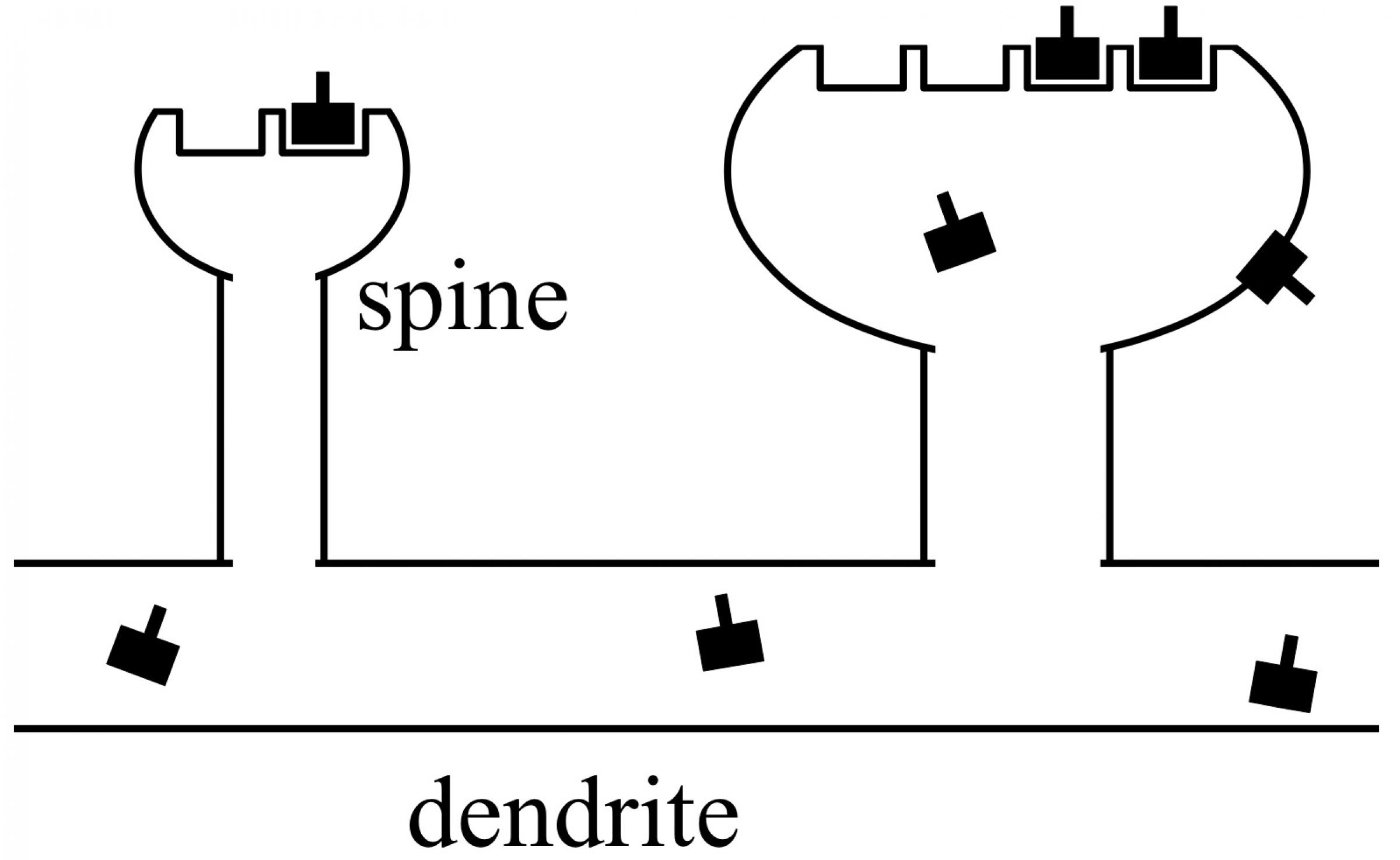September 27, 2018
Competition among synapses
When resources become scarce, neighboring synapses compete, say Frankfurt Neuroscientists
FRANKFURT. How do neighboring synapses interact during learning? Frankfurt scientists have proposed a new mathematical model describing a competition of neighboring synapses for limited resources during learning. The scientists report their findings in the current issue of eLife.
Synapses play a key role in the communication between nerve cells. At synapses a sending neuron can transmit signals to a receiving neuron by releasing chemical messenger molecules, so-called neurotransmitters. The neurotransmitter molecules can then bind receptors at the surface of the receiving neuron turning chemical signals into electrical signals. The strength of those electrical signals is largely determined by the number of neurotransmitter receptors on the side of the receiving neuron. Typically, a neuron has thousands of such synapses, through which it receives signals from thousands of other neurons. Scientists believe that memories are stored in the patterns of strengths of these synapses and that learning processes change the strengths of these synapses. Interestingly that can happens through lasting alterations of the number of receptors in a synapse during learning.
During the last years, however, scientists have made the surprising discovery that the behavior of these receptors is highly dynamic, even if no learning is taking place. Instead of remaining in a synapse for long durations, the receptors are constantly moving in and out of different synapses. Sometimes they may visit a synapse for only a few seconds. What impact does this dynamic behavior have on synaptic function? How does it influence learning processes? And why can we nevertheless remember certain facts or events for years? To address these questions, Prof. Jochen Triesch from the Frankfurt Institute for Advanced Studies and Dr. Anne-Sophie Hafner from the Max-Planck-Institute for Brain Research in Frankfurt, together with Anh Duong Vo, a student of mathematics and computers science at Goethe University Frankfurt have developed a new mathematical model.
Their model describes a group of neighboring synapses, in which neurotransmitter receptors can dock to stable receptor slots inside a synapse. In addition to the receptors within the synapses, the model contains a “reserve” pool of receptors freely moving at the neuron surface between the synapses. This pool is constantly renewed through processes that add and remove receptors. Through a detailed analysis of this simplified model, the scientists could explain a number of known effects and make a couple of novel predictions. The research team could show that scarcity of receptors in the pool induces a competition of neighboring synapses for the remaining receptors. They show that this has important effects on processes implicated in learning. When one synapse grows and adds new receptor slots, which will bind additional receptors, it does so at the expense of other synapses. Fortunately, however, the effect is only transient such that storing information at one synapse does not imply losing information at nearby synapses.
The constant movement of receptors also leads to fluctuations of synaptic strengths in the model. Interestingly, strong synapses, which presumably play a dominant role in information processing, turn out to fluctuate relatively less than weak synapses. The strongest and most important synapses therefore also function with the greatest precision according to the model. „This and other predictions of the model should now be urgently tested in new experiments,“ says Triesch. Ultimately, the new model may also help to better understand brain disorders associated with synaptic malfunction and in particular neurodegenerative disorders like Alzheimer disease.
Contact for further questions:
Contact: Prof. Dr. Jochen Triesch. Frankfurt Institute for Advanced Studies and Dept. of Physics and Dept. of Computer Science and Mathematics, Goethe-University Frankfurt. Campus Riedberg, Tel. 069 798 47531, triesch_at_fias.uni- frankfurt.de.
Publication: Triesch, J., Vo, A.D., Hafner, A.-S. (2018). Competition for synaptic building blocks shapes synaptic plasticity. eLife 7:e37836.
The full text article is available on eLife - an open access journal that publishes promising research in the life and biomedical sciences.
For acces to the link click "more information".
